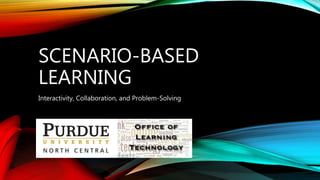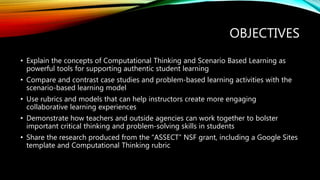The document outlines the concepts of scenario-based learning (SBL) and computational thinking, emphasizing their importance in fostering critical thinking and problem-solving skills among students across various educational levels. It includes resources such as rubrics, templates, and examples of SBL lessons to help educators implement these approaches effectively. Additionally, it discusses collaborative strategies involving teachers and external experts to enhance authentic learning experiences for students.











